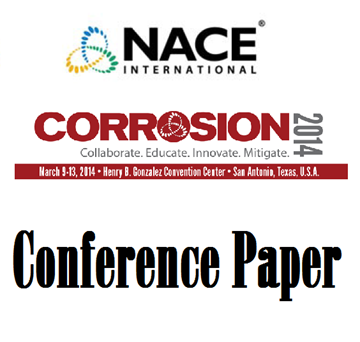Search
51314-3744-Modeling Localized Corrosion of Corrosion-Resistant Alloys in Oil and Gas Production Environments
Also Purchased
51314-3727-Corrosion Resistance of UNS S31803 Duplex Stainless Steel in Sour Environments
Product Number:
51314-3727-SG
ISBN:
3727 2014 CP
Publication Date:
2014
$0.00
51314-3723-Pipeline Corrosion Management; a Compendium
Product Number:
51314-3723-SG
ISBN:
3723 2014 CP
Publication Date:
2014
$0.00
51314-3731-Frequent Failure in Metallic Tubes Due to Salt Deposition
Product Number:
51314-3731-SG
ISBN:
3731 2014 CP
Publication Date:
2014
$0.00




